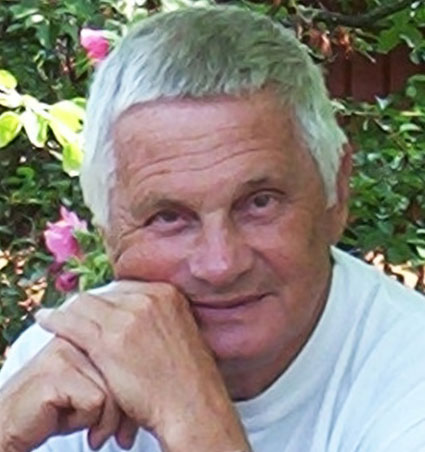
ATLAS e-News
23 February 2011
In Memoriam: Boris Dolgoshein (1930 – 2010)
25 January 2011

On December 14th 2010, Boris Dolgoshein, a pioneer of many detector technologies and one of the fathers of our ATLAS TRT, passed away in Moscow.
Boris led, over many years and across stormy seas, the design and the performance studies of this novel type of transition radiation tracker based on drift tubes, as the spokesperson of the RD6 collaboration. His unmatched experience, brilliant ideas and the painstaking care which he continuously put into understanding fully the complex behaviour of the straws at very high occupancies and in an extremely harsh radiation environment have been invaluable to most of the aspects of this daunting project. Thanks in great part to Boris, the TRT now provides excellent measurements of charged particle trajectories and beautiful views and measurements of tracks from proton (and even heavy ion!) collisions at the LHC: in the event displays, the signals of the individual drift tubes look like pearls on a string.
There is a very nice talk by Boris on the history of our TRT and its R&D programme. It is fascinating to read about all the challenges and the solutions found by the team.
Indeed, you cannot mention transition radiation detectors (TRDs) without mentioning Boris. He was the physicist who developed and pioneered these gaseous detectors for particle tracking and particle identification. His experience and expertise with these sophisticated types of detectors goes back to the early seventies and there is hardly any TRD in the world to which Boris has not significantly contributed. Among them are the TRD of the HELIOS spectrometer at the SPS, the Transition Radiation Detectors of the ZEUS and HERA-B experiments at HERA, the TRD of the AMS spectrometer waiting in the Kennedy Centre for its space mission and our huge Transition Radiation Tracker of the ATLAS experiment at the LHC. Most of the TRDs in the world, at accelerator-based experiments or in space, were built following the example of one or the other of these TRDs and profited from the intensive and careful R&D programmes Boris and his collaborators carried out.
Boris, born in 1930, was very well known in the world-wide particle physics community for his work on transition radiation detectors. But he also invented and developed many other detector technologies which generations of particle physicists have used and are using for their experiments in all areas of particle detection – calorimetry, tracking and particle identification.
In the early sixties, Boris Dolgoshein and his colleagues invented and developed a new type of gas-discharge chamber, the streamer chamber, and brought the technology to perfection. At that time, the technique competed with that of bubble chambers, producing images of particle trajectories with the additional potential of being triggered by external devices via the pulsed electric field. The largest streamer chamber ever built was constructed in 1968 in MEPhI by Boris and his team. It was 8 metres long and operated many years in Protvino at the U-70 synchrotron, searching for the W boson. These streamer or spark chambers are well known today to many people outside particle physics because they often appear in public exhibitions, making particles and their tracks real! If you have the opportunity, please visit the new CERN exhibition in the Globe where you can admire one of theses spark chambers in action.
An article by Boris published in the mid-seventies suggested acoustic registration of high-energy neutrinos by measuring the sound signals from hadron showers created by neutrinos in the depth of ocean waters. The acoustic method was realised on prototypes in the US and at Lake Baikal in Russia and is currently explored in the context of the IceCube and ANTARES neutrino telescopes and may be an option for the future Mediterranean KM3NeT project.
Throughout the time he was preparing detectors for the LHC, Boris continued to work on ideas and concepts for new detectors, and in 1993, in close collaboration with DESY, he started to develop a new type of very high-gain silicon photodetector, a device sensitive to single photons and built from an avalanche photodiode array on a common Silicon substrate. These detectors, called Silicon Photomultipliers (SiPMs), a name suggested by Boris, are highly successful and will be used on a large scale such as that of the CALICE tile hadron calorimeter prototype, which has already been tested successfully, or of parts of the upgrade of the CMS Hadron Calorimeter.
Since the late seventies, CERN and its accelerators have been a scientific home for Boris, not only for preparing and carrying out particle physics experiments but also to be active in science policy. As a member of the CERN-Russia Committee (1991-1996), Boris contributed to the preparation of an agreement for scientific and technological cooperation, allowing the Russian research institutes, with the assistance of sectors of Russian industry, to provide major contributions to the construction and utilisation of the LHC.
For his very creative and innovative work, Boris got rewarded with many prizes, such as the Lenin Prize, the Humboldt Prize and the Kapitza Gold Medal. He was an Academician of the Russian Academy of Natural Sciences and a long-standing member of the Advisory Editorial Board of the Journal on Nuclear Instruments and Methods in Physics Research Section A, following and monitoring the progress on design, manufacturing and performance of scientific instruments.
For several generations of experimental physicists, Boris has been an inspirational mentor and a model. His creativity has continuously motivated his colleagues to produce new ideas and to work with great enthusiasm.
It has been an unforgettable experience to all of us to work with a personality like Boris and we will miss him sorely in the years to come.
Boris’s colleagues and friends from ATLAS
|
|